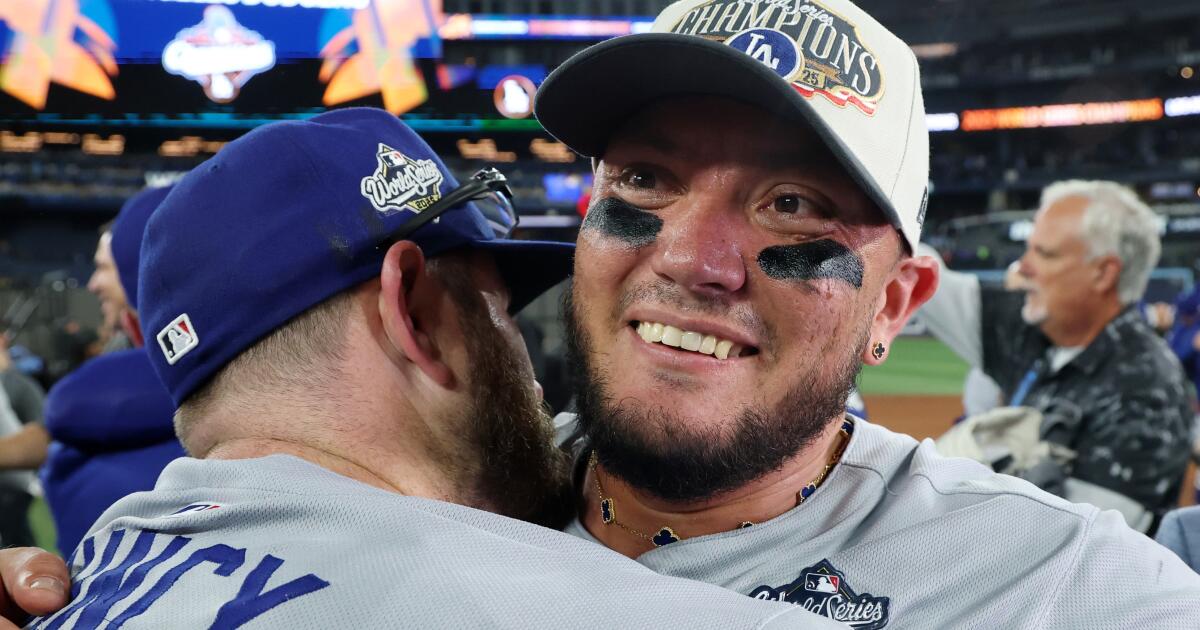2025 World Series hero Miguel Rojas agrees to return to Dodgers
This past postseason, Miguel Rojas announced that 2026 would be the last year of his MLB career.
On Wednesday, he and the Dodgers ensured he would go out in Los Angeles.
Barely a month removed from Rojas’ heroics in this year’s World Series, he and the Dodgers agreed to a one-year, $5.5-million contract for next season, according to multiple people with knowledge of the situation not authorized to speak publicly.
The move marks the Dodgers’ first signing of this offseason, bringing back the 12-year veteran and utility infielder in the club’s quest for a third consecutive World Series title.
After retiring at the end of next season, Rojas will also stay with the organization in a player development role.
El Extrabase first reported the signing.
Back at the beginning of his career, Rojas first broke into the majors with the Dodgers in 2014 before being traded to the Marlins. After eight seasons in Miami, Rojas was traded back to the Dodgers before the start of the 2023 season, and has become a key veteran voice in the team’s clubhouse since.
On the field, Rojas has remained a productive presence, hitting .259 with 18 home runs and 94 RBIs over the last three years. He has also provided value defensively, playing second base, third base and shortstop — and becoming a finalist for the National League’s utility player Gold Glove award last season.
No contributions, of course, were more important than what Rojas did in the World Series against the Toronto Blue Jays.
After being drawn back into the lineup for Game 6 of the series, he helped complete a game-sealing double-play by picking a throw from Kiké Hernández at second base.
Then in Game 7, he hit a season-saving, game-tying home run in the top of the ninth inning, before throwing out a potential winning Blue Jays run at home plate in the bottom half of the inning.
He did it all while playing though an injury, too, having aggravated an intercostal problem in the team’s celebration after Game 6.
Injuries have been a recurring problem for Rojas, dealing with forearm, hamstring and hernia injuries in recent years.
However, his value on and off the field made him a likely candidate to be re-signed this winter.
On Wednesday, he and the team made the reunion official.
